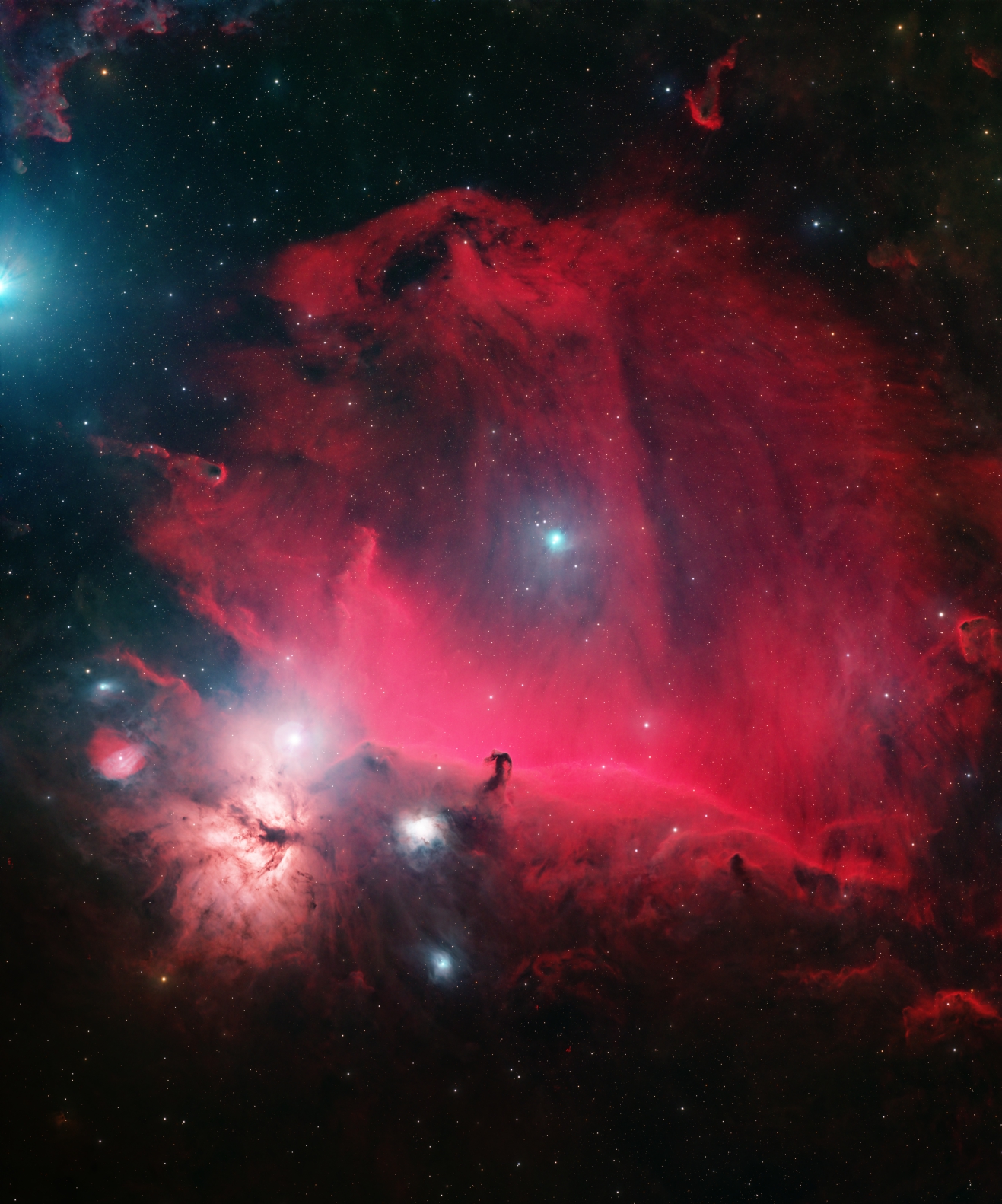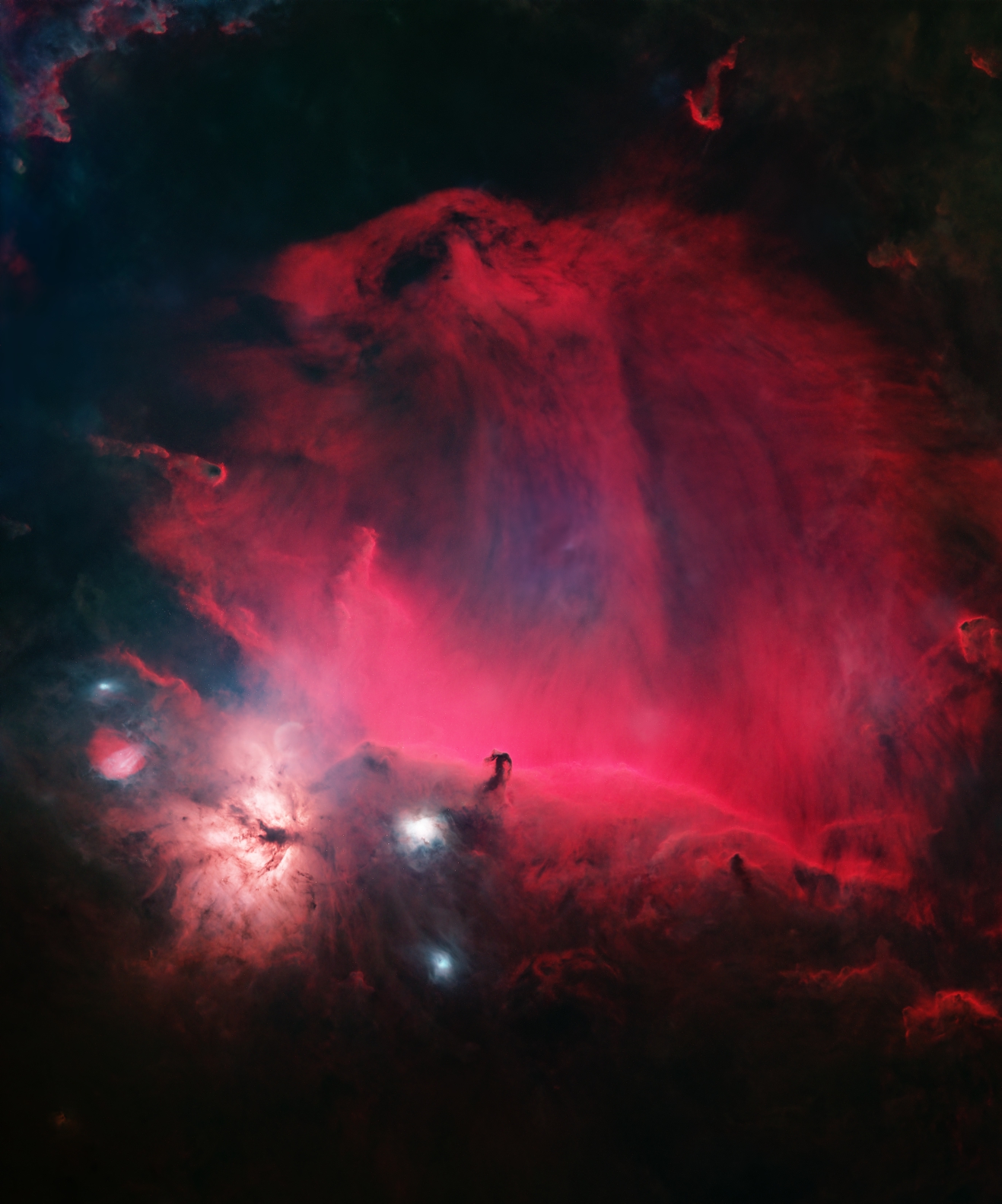The Horsehead and Flame Nebulae, in RGB plus Narrowband
This is my late-2024 take on the Horsehead and Flame Nebulae in a fairly wide view from my 530mm f/5 refractor. This view, taken over ten different nights, is cropped but if you click through you can see a bigger view along with processing details.

My favorite part is the part that looks like a giant comet with a tail flying through from the left about a third of the way down.
Acquisition details
Per-filter totals for this image:
- Sii : 11.00 hours (66 subs)
- Ha : 8.83 hours (53 subs)
- Oiii : 5.83 hours (35 subs)
- Red : 3.67 hours (44 subs)
- Green : 3.42 hours (41 subs)
- Blue : 3.33 hours (40 subs)
- total : 36.08 hours (279 subs)
Processing details
All processing was done in PixInsight, using several plugins and scripts.
RGB filters
The processing included (see the processing icons here):
- RGB combination via ChannelCombination
- Auto Linear Fit
- GradientCorrection
- SPCC, set up for my astrodon RGB filters and PhotonFlux
- BlurX Full
- NoiseX
- StarX
- Stretched the stars via SetiAstro’s “Star Stretch”
- GHS and a bit of curves to stretch the starless
Narrowband Filters
I performed these steps on the individual Ha, Oiii, and Sii master images:
- BlurX
- GradientCorrection
- NoiseX
- StarX (I didn’t use the stars from these)
- GHS and a bit of curves to stretch each starless image
Combination
At this point I had 5 stretched (AKA “non-linear”) images to combine:
- RGB Starless
- RGB Stars
- Sii Starless
- Ha Starless
- Oiii Starless
Using the “CombineRGBAndNarrowband” script, I added HOO to the RGB starless image, then folded the Sii into that combined image as red via the ImageBlend script.
Finally, I used a PixelMath script to sprinkle the RGB stars back in.
Move the Blue Slider to see a Comparison

|


Image details on Astrobin

